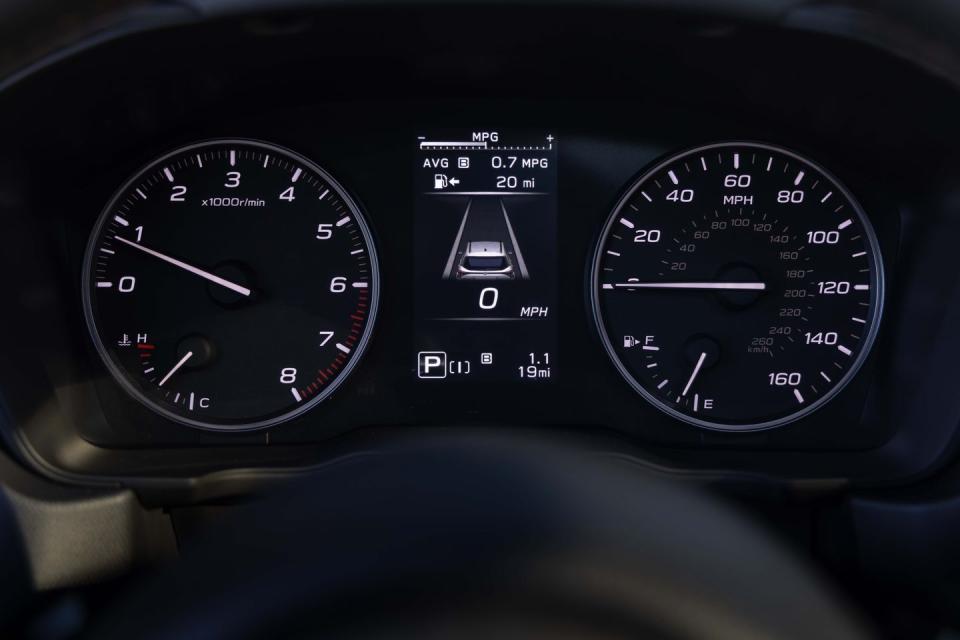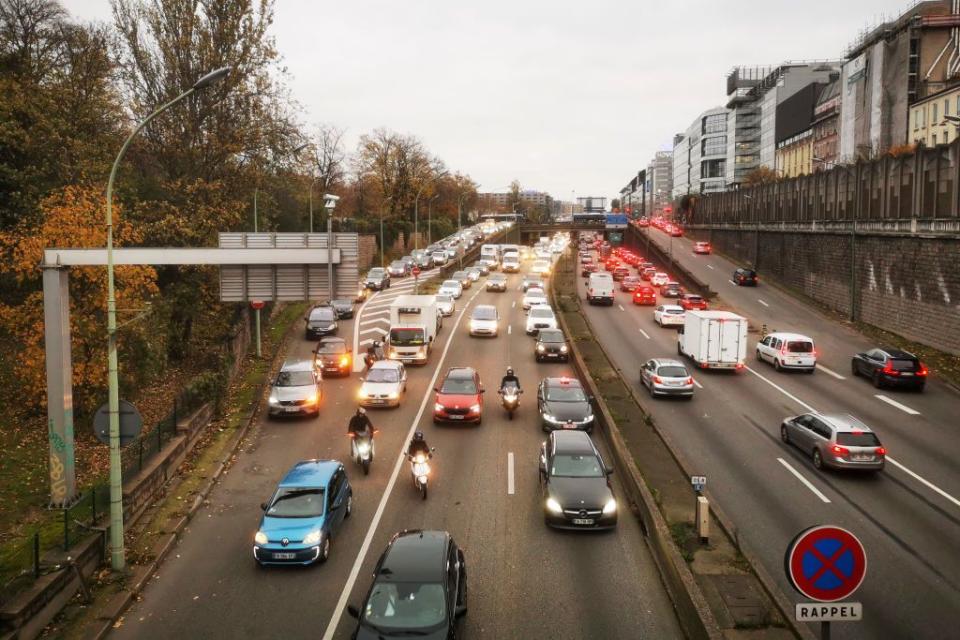Should the US Mandate Speed Monitoring Systems? Regulators Say Yes

The European Union mandated intelligent speed-assistance technology late last year and now the US might be following in its footsteps.
The NTSB has proposed a series of rules to the NHTSA, automakers, and the IIHS around mandating speed monitoring technology on all new cars and for certain drivers.
Passive versions of these systems require verbal or visual warnings while active versions can hold vehicles at set speeds, though the NTSB recommends passive versions to start.
There is seemingly no shortage of tragic, heart-stopping traffic crashes that make national headlines each year. Among the millions of passenger car collisions, however, a select few draw attention as a result of heinous negligence. And such negligence often comes in the form of gross speeding.
The National Transportation Safety Board (NTSB) points to a crash that happened nearly two years ago, involving a 2018 Dodge Challenger traveling through a red light in Las Vegas at 103 mph. Nine people were killed, including the driver, his passsenger, and a family of seven in a minivan that was struck by the speeding Challenger.

Such graphic and severe crashes are not that uncommon, and the NTSB as well as the Insurance Institute for Highway Safety (IIHS) want to change this. And the first step toward eliminating such behavior from the collective roadway is through the vehicle itself, both agencies say.
Specifically, the NTSB and IIHS are calling for the industry-wide adoption of intelligent speed-assistance technology. Mandatory in the European Union, intelligent speed assistance uses GPS location and cross-references it with a database of speed limits and onboard cameras to alert drivers when they are speeding.
Naturally, a number of different versions of the intelligent speed assistance technology exist, with most European legislation focusing on the passive versions that rely on visual, sound, or haptic alerts to notify drivers of speeding. But ultimately it's up to drivers to maintain the appropriate speed.
Active ISA systems, on the other hand, include mechanisms (often through the accelerator pedal) that make it more difficult to go above the speed limit. The most stringent of these active systems will electronically restrict vehicles to the speed limit, though the NTSB isn't calling for such drastic measures just yet.
In fact, the NTSB has only recommended that 17 car manufacturers install passive ISA systems in all new passenger vehicles. Such passive systems will only require verbal or visual reminders to manage speeds, though the NTSB has expressed interest in an ISA interlock system for repeat speeding offenders.
The recommendations put forward by the NTSB are typically pragmatic and intended to factually inform the bureaucratic rule-making process. However, the NTSB recommended to the IIHS as well, saying the non-profit organization should study the safety outcomes of car marketing that emphasizes risky behavior.

"We know the key to saving lives is redundancy, which can protect all of us from human error that occurs on our roads," said NTSB Chair Jennifer Homendy. "What we lack is the collective will to act on NTSB safety recommendations."
In partnership with the Road to Zero Coalition, the IIHS is echoing the necessity to install warning-based ISA systems on new passenger cars while saying commercial operators and public fleets should implement active speed limiters. With the goal of eliminating traffic fatalities by 2050, the IIHS says these types of speed-assistance systems are crucial.
Similarly, the IIHS says performance standards for ISA systems should be set by the federal government. With a nationalized standard, implementing these systems on all new vehicles could be more straightforward. Finally, the IIHS recommends that high-risk groups (repeat offenders or teen drivers) should be mandated to use ISA systems.
"Speeding causes more than a quarter of all crash deaths every year, accounting for more than 12,000 lost lives in 2021," said Jessica Cicchino, vice president of research at IIHS. "In-vehicle technologies can be an important part of the solution."

But it's unlikely manufacturers will easily submit to this safety system change, at least before it is federally required. While many new cars already alert drivers of speed limit digressions, automakers are often protective of their proprietary technology and data. Opening up such systems to federal standards could unsettle many automakers.
In the European Union, where ISA systems will be required for all new cars in 2024, a group of 21 automakers just agreed on a common ISA map. Provided by Here, a data company based in The Netherlands, the ISA maps will be implemented across 50 brands and fed by a multi-source data loop to ensure accuracy.

Should this federal mandate move forward, there are a few sources to draw real-world insights from, and not just in Europe. New York City has already experimented with actively speed-limiting its fleet of municipal vehicles and many commercial vehicle operators do the same thing.
Additionally, the NTSB is calling for hard speed limiters on big rigs, set to a maximum of 68 mph. Onset by rising numbers of fatal crashes involving speeding trucks unable to stop, the addition of speed limiters would augment systems like automatic emergency braking, which is federally mandated for semi-trucks as of this year.
The Road to Zero coalition acknowledges that many US drivers will have concerns about these systems, namely surrounding autonomy and emergencies. The group admits it will be imperative to balance the safety benefits of ISA with willing consumer acceptance, particularly if the system can be defeated.
As a result, it's unlikely we will see hard limiters soon, though the kind of auditory reminders are here to stay. European studies have shown a reduction in speeding of around 30% in early testing of the technology, though European driving sensibilities and roads differ greatly from those of Michiganders and New Jerseyans.
How do you feel about active speed limiters on your car? Too much intrusion or necessary for public safety? Please share your thoughts below.

 Yahoo Autos
Yahoo Autos 